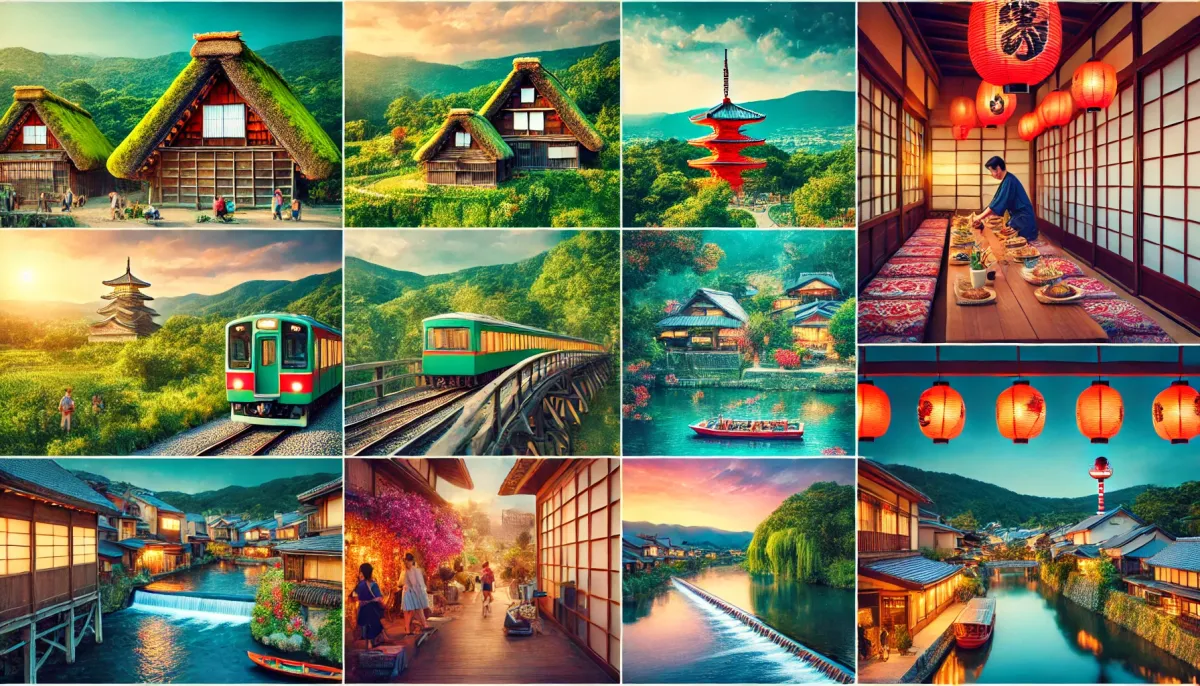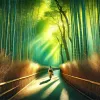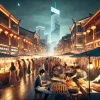Hello fellow adventurers! Mark here, your friendly American backpacker, back with another exciting Asian escapade. This time, I ditched the usual tourist traps and explored the serene, less-traveled corners of Kyoto, Japan. Forget battling crowds in sweltering heat – this itinerary is all about tranquility, unique experiences, and discovering the real heart of Kyoto. Get ready to be inspired!
Escaping the Hustle: Miyama's Charming Thatched Village
After exploring the coastal beauty of Ine no Funaya (the "Venice of Japan"), I ventured to Miyama Kayabuki no Sato, a hidden gem nestled in the mountains. This picturesque village is home to just 29 preserved thatched-roof houses, offering a glimpse into traditional Japanese rural life. Unlike the bustling crowds of Shirakawa-go (a UNESCO World Heritage Site), Miyama offers a peaceful escape, perfect for those seeking a quiet retreat.
The village's remote location adds to its charm, ensuring fewer tourists and a tranquil atmosphere. Upon arrival, a bright red mailbox signaled my entrance to this enchanting world. Inside, I was greeted by a serene ambiance. Even with my tour group, we kept our voices hushed, mindful of the residents who call this village home.
While accommodations are limited, Miyama boasts several cozy cafes where you can savor light meals. I indulged in the famed Miyama ice cream, a must-try delicacy. Made with locally sourced milk, it's easily one of the best ice creams I've ever tasted, rivalling even Hokkaido's renowned offerings.
Miyama is truly a dream destination for those seeking an authentic, crowd-free experience. While the journey may require a bit more effort, the rewards are well worth it. This secluded village offers a rare glimpse into traditional Japan, a true haven for the adventurous soul.
Navigating Kyoto's Countryside: The Eizan Electric Railway
Reaching these hidden gems can be a challenge, but fear not! I discovered a convenient and affordable way to navigate Kyoto's countryside – the Eizan Electric Railway. For just ¥1200 (roughly $8 USD), the one-day pass is a steal, especially if you plan on visiting multiple attractions along the line.
| Feature | Description |
|---|---|
| Cost | ¥1200 (approx. $8 USD) |
| Validity | One day |
| Coverage | Kurama Temple, Hiezan Mountain, and more |
| Key Stops | Demachiyanagi Station (starting point), Kurama, Kibune |
| Recommendation | Purchase if visiting 2+ stops |
From Kyoto Station, simply take the JR to Tofukuji Station, transfer to the Keihan Line to Demachiyanagi Station, and hop on the Eizan Line. This scenic route is a local favorite for viewing cherry blossoms in spring, lush greenery in summer, and vibrant foliage in autumn.
Kibune Shrine: A Summer Sanctuary
One of the highlights along the Eizan Line is Kibune Shrine, often hailed as one of Japan's most beautiful shrines. Its iconic red lanterns and stone steps leading up to the main building are a photographer's dream.
During the summer months, Kibune offers a unique culinary experience: nagashi somen, or flowing noodles. Imagine sitting on a platform over a small stream, catching chilled noodles as they flow by. It's a refreshing and fun way to beat the summer heat!
For a more upscale dining experience, Kibune also offers kawadoko riverside dining. Numerous restaurants line the riverbanks, offering a variety of cuisines. I highly recommend Beniya, the largest kawadoko establishment, with a capacity of over 200 people. Their menu features fresh local ingredients, including ayu (sweetfish) caught from the river. Prices range from ¥4500 to ¥20000, catering to different budgets. The experience of dining by the cool river, surrounded by nature, is truly unforgettable. Even on a warm summer afternoon, the breeze and the flowing water made it surprisingly chilly!
Urban Oasis: Kamogawa Noryo-Yuka
For a city-center cooling experience, head to the Kamogawa River for the Noryo-Yuka, seasonal elevated platforms set up along the riverbanks. From May to September, restaurants offer outdoor seating where you can savor delicious food while enjoying the scenic views of the Kamogawa River.
Like Kibune, the evening breeze by the river can be surprisingly cool, so a light jacket is recommended. The nighttime ambiance of the Kamogawa is magical, offering a different perspective from the daytime bustle. The cuisine here is equally impressive, with many restaurants showcasing Kyoto's culinary excellence.
A Luxurious Stay: Fusion of Japanese and Thai Hospitality
After a day of exploring, I checked into a unique hotel near the Kamogawa River, just a five-minute walk from the Noryo-Yuka. This newly opened establishment blends Japanese and Thai design elements, creating a truly unique atmosphere.
Designed by a Thai architect, the hotel incorporates elements of Thai temples and traditional Japanese aesthetics. Upon arrival, I was greeted with a refreshing cold towel and a cup of ginger tea, a welcoming touch reminiscent of Thai hospitality.
My room featured a large window with stunning views of Kyoto Tower. The room's wooden decor and minimalist design exuded a sense of tranquility. The complimentary welcome snacks included fresh fruits, such as muscat grapes and figs, along with traditional Japanese wagashi sweets.
The hotel's restaurant offers a diverse culinary experience, from Japanese and Thai cuisine to a teppanyaki grill and a bar. The breakfast buffet was a highlight, featuring a mix of Japanese and Thai dishes. I couldn't resist the authentic Pad See Ew, which was simply delicious.
While the price tag of around ¥11,000 (approximately $75 USD) per night (without breakfast) is on the higher side, the luxurious amenities, prime location, and unique cultural fusion make it a worthwhile splurge.
This Kyoto itinerary is just a starting point. From tranquil villages to bustling cityscapes, Kyoto offers something for every traveler. So pack your bags, embrace the adventure, and discover the hidden gems of this captivating city.







